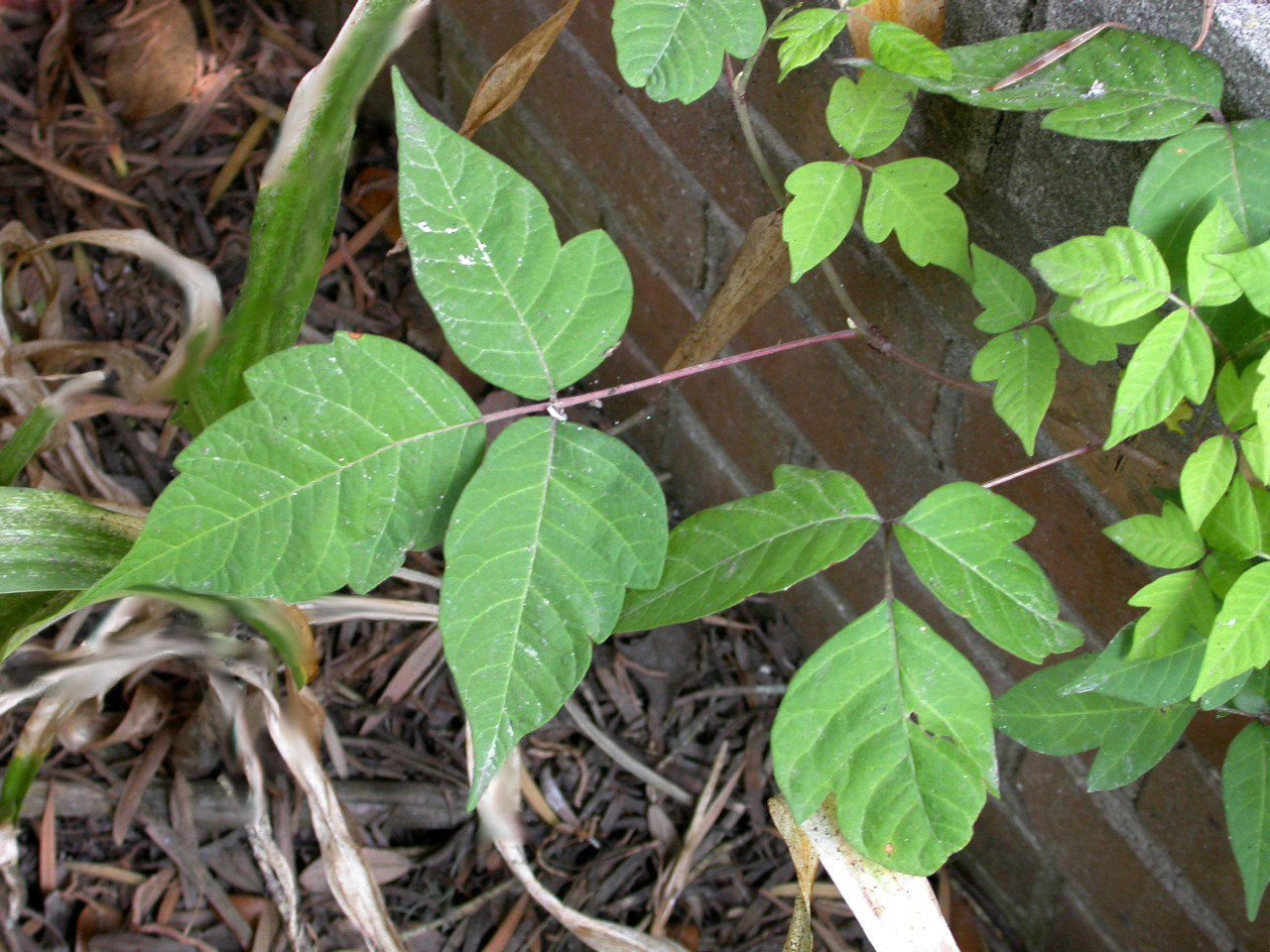
They are wider and look similar to an oak leaf with a rounded tip. The leaves are dark green but often have a reddish tint. Poison oak leaves also grow in clusters of three. According to Ali Malik, the Poison Ivy Specialist, “It is not uncommon for each of the three leaves on one stem to have different characteristics such as color, size or shape.” Poison ivy leaves are elongated or almond-shaped, sometimes with a scalloped edge.


They are a rich green color and shiny, but they turn reddish in the fall. The leaves on a poison ivy plant are always in clusters of three. Poison ivy has three almond-shaped leaves, and poison oak has groups of three leaves shaped like oak leaves. Poison oak usually grows as a low shrub on the southeastern coast but grows in tall shrubs or vines up to 3 feet tall on the West Coast or in the South.Ģ. The vine can be fuzzy-avoid touching to check it, though. Poison ivy generally grows as a vine or ground covering plant on the East Coast or a shrub on the West Coast. Poison ivy most often grows as a vine, while poison oak can grow as a vine or a shrub. If you suspect one of these plants is growing on your property, take prompt action to remove it. The old saying, “Leaves of three, let it be,” is a basic rule of thumb for caution around unknown plants. Though the plants may seem similar, the differences between poison ivy vs poison oak can help identify the plants more quickly if one is exposed. These invasive plants secrete a toxic oil called urushiol, which causes an unpleasant swollen and itchy rash for up to 2 weeks in most people who come in contact with it. Have a look at the photo below.Outdoor activities are fun and refreshing-unless poison ivy or poison oak ruins the day. Now if you’re really worried about poison ivy, I’d suggest wearing socks, shoes and jeans. For this post, I took the photos in late May, on the Steinke Basin Trail. You tend to find it right along the hiking trails where the plant can compete for sunlight. Specifically at Devil’s Lake State Park, there is a lot of poison ivy out there. Of course, if you find yourself having extreme reactions such as trouble breathing, swelling around the face, eyes, or genitals, or spreading oozing blisters get to a medical facility right away. They also advise NOT to use topical antihistamines, anesthetics that contain benzocaine, or antibiotics that contain neomycin which could cause further problems. Ew! For what it’s worth, about 15% of you won’t react at all! For most of us however, we will show signs of an allergic reaction.Īccording to UW Health, if you have a poison ivy reaction, you’re best options are to soak the area affected, apply a wet cloth or use calamine lotion. If you get into it, you may experience itching, red streaks where you rubbed against the plant, hives and in time some people even get blisters. This is what you’ll usually see lying in wait along the trails of Devil’s Lake State Park. The poison Ivy in the picture above is classic. Poison Ivy along the Steinke Basin Trail in Devil’s Lake State Park. Its leaves are usually jagged, but not always, sometimes shiny by not always, usually grows on the ground, but can vine up a tree as well! Oh, and in the autumn it’s one of the first plants to turn red! That said, once you look at enough of it, you’ll usually recognize poison ivy in all its forms. Then to make things more confusing, poison ivy doesn’t always play by the rules. Jack-in-the-Pulpit and Raspberries are just two examples. and there are quite a few plants out along the trails that are perfectly harmless, but have “leaves of three”. Kids who grew up in “outdoor” families were often taught the old, “Leaves of 3, leave it be!” warning. a lot of it! But, do you know it when you see it? Jack-in-the-pulpit also has leaves of 3 I can tell you from my hike yesterday here at Devil’s Lake State Park, that it’s out there. Most of us know that we need to avoid poison ivy out on the trails.

Can you identify the plants in this picture?


 0 kommentar(er)
0 kommentar(er)
